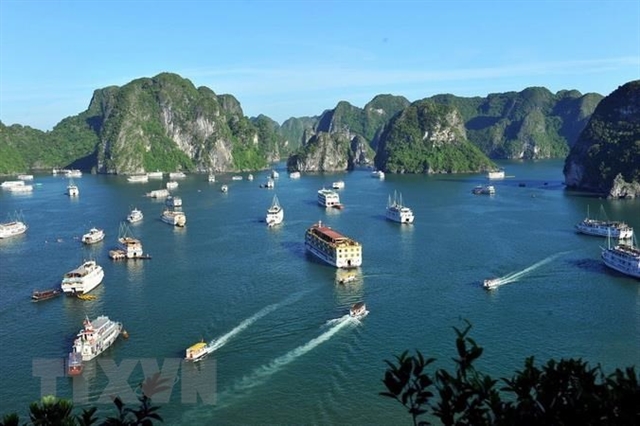CNN: Hạ Long Bay One Of The Top 25 Most Beautiful Places On Planet


The US television network CNN has listed Hạ Long Bay in Quảng Ninh Province as one of the top 25 most beautiful places on the planet. — VNA/VNS Photo
HCM CITY — The US television network CNN has listed Hạ Long Bay in Quảng Ninh Province as one of the world’s 25 most beautiful places.
One of the most popular natural attractions in South East Asia, Hạ Long Bay is home to 1,969 islets of hulking limestone and deep, green waters that are home to myriad floating villages, according to CNN.
It was recognised as a world heritage site in 1994 by UNESCO. It was also voted among the world’s seven new natural wonders by Swiss organization New Open World in 2011.
Cửa Vạn floating fishing village in Hạ Long Bay is one of the hidden gems in Việt Nam that has yet to be overrun by vacationers. It is home to more than 170 fishing families, CNN added.
Beside Hạ Long Bay, Zhangjiajie National Forest Park in China and El Nido in the Philippines are also on the list of 25 most beautiful places on the planet. — VNS
Submarine DeepView24 To Serve Visitors At Vinpearl Nha Trang
US dollar billionaire Phạm Nhật Vượng, Chairman of Vingroup, will put into operation DeepView 24, a spectacularl... Read more
Bánh Khọt A Must-try At Vũng Tàu Beach
Bánh Khọt (mini savory pancake) is a great breakfast dish that visitors must try when staying at Vũng Tàu beach... Read more
Explore The First Museum In Southern Việt Nam
The HCM City Museum of History is located at Nguyễn Bỉnh Kiêm Street in District 1, set beside Saigon Zoo and Bota... Read more
Explore Hidden Waterfall In Central Việt Nam
Tà Puồng Waterfall is one of Việt Nam Central’s most impressive natural sights, with an unspoilt beauty. Read more
Bat Pagoda, Home Of Thousands Of Bats In Mekong Delta
The Cửu Long (Mekong) Delta is home oi about 600 Khmer pagodas and each temple has a unique feature. The Bat Pago... Read more
100-year-old Bửu Sơn Pagoda Rests On One Pillar
The 100-year-old Bửu Sơn Pagoda in Đồng Nai Province, built in the 18th century, rests on only one pillar. Read more

